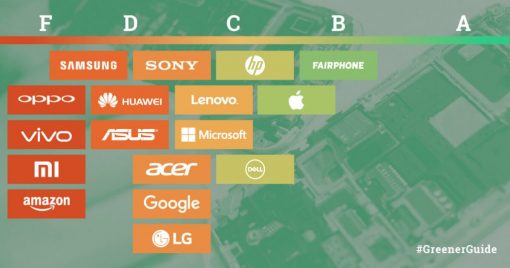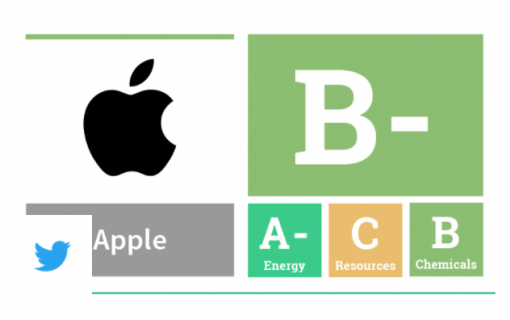Apple presents a new Environmental Responsibility Report and gets a good grade from Greenpeace.
The reports explains in detail how Apple was able to shift all needed energy to renewable sources and how the company works on the challenge to also include their suppliers. The report also lists which materials are used in production and what sources are chosen. If you are interested in the whole picture you can find the pdf here.
Furthermore, Apple explains at length how they try to perfect the recycling process so that valuable resources are kept in the material cycle. For that purpose a new robot was introduced, which can disassemble old iPhones. This shall optimize the separation of materials and lead to better recycling quota.

All these efforts are recognized by Greenpeace, and give Apple a second place in Greenpeace’s newest ranking, directly behind Fairphone and before all other production companies. Greenpeace praises explicitly the move to sustainable energy and the absence of harmful substances during production.

There is one point of criticism though: Greenpeace criticizes that newer Apple products are not that easy to repair. Especially the fact, that a later upgrade, for example a new SSD, is impossible is criticized. In addition, Apples engagement in the political process to prevent a right to repair is seen critically.

Our opinion: Greenpeace has a point. As Apple themselves show 70% off all product emmissons arise during production. The biggest and most positive impact would then be to use a product as long as possible.
Apple products, however, do run perfectly fine for a very long time. Our oldest still used devices are an iPhone 4s, 5s, iMacs from 2010, a MacBook Pro 2009 and an iPad 4. They all work fine. It seems to be the users responsibility to use the devices longer.
Component integration and reliability increase.
There is another factor: most parts of newer devices are highly integrated, that it is impossible to change parts, because they just do not exist anymore. A good example is the MacBook 12″. If have a look on the inside, you will see that there is only a little board with all components on it. They got so small, that it makes no sense anymore to build separate pieces. In addition, reliability increases every day. SSDs are able to withstand hundreds of terabytes of data. For the average user that means a lifetime of a few decades. Mechanical hard drives, which statistically fail much earlier, are exchangeable still.




